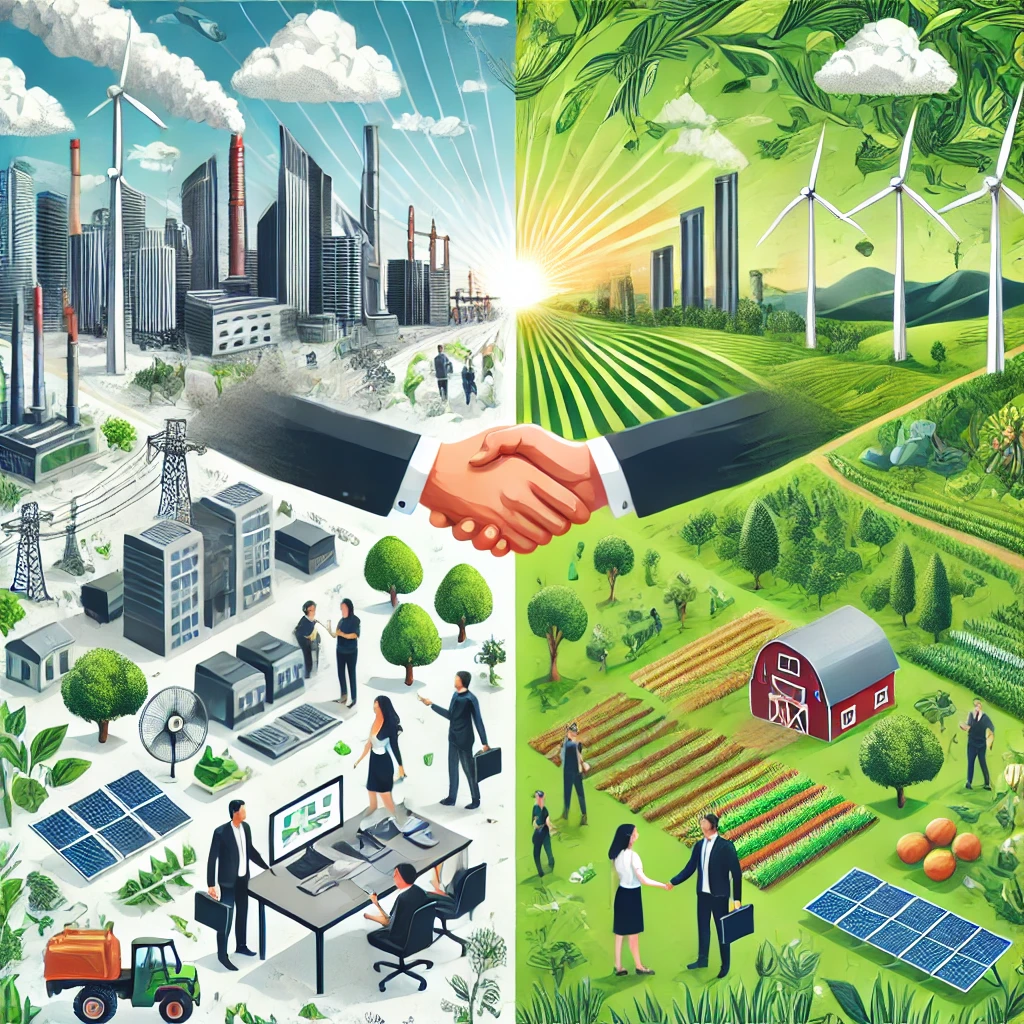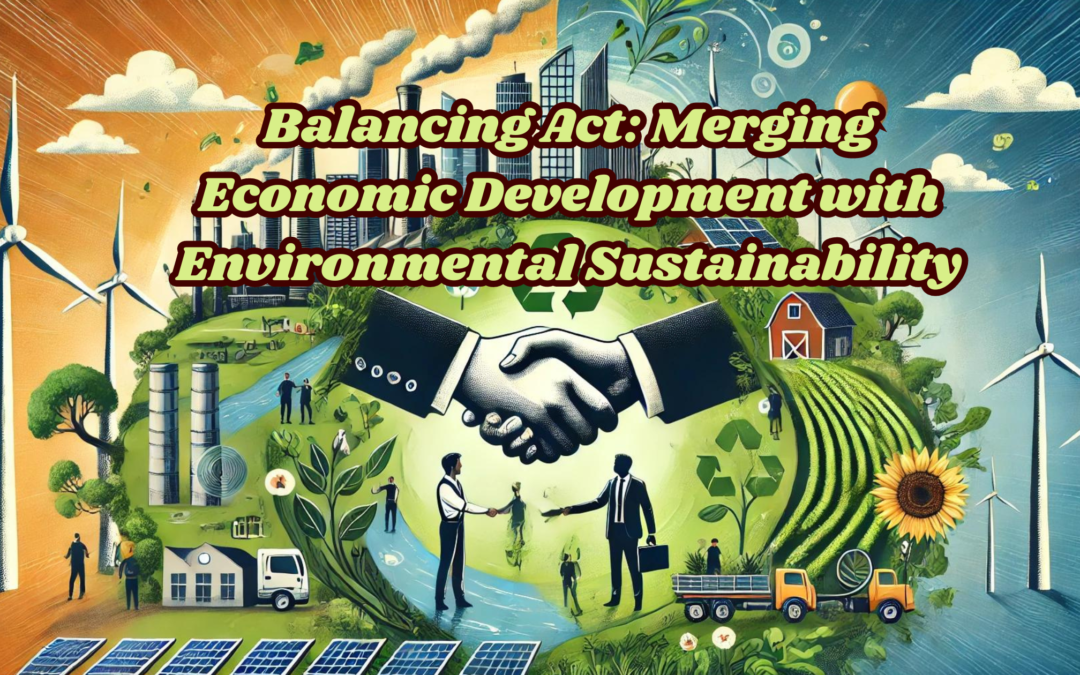In today’s world, the intersection of economic development and environmental sustainability is becoming increasingly important. The rising impact of human activities on the environment necessitates measures to reduce pollution, minimize waste, and adopt renewable energy sources. Achieving a balance between environmental protection and economic growth is crucial for long-term ecological health and success. This blog post explores how to attain Sustainable Development Goals (SDGs), foster green economies, and incorporate sustainable practices into economic activities.
Importance of Economic Development
Economic development is essential for raising living standards, combating poverty, and promoting innovation. However, traditional economic growth models often prioritize immediate profits over environmental well-being. This approach leads to pollution, habitat destruction, and overuse of natural resources, jeopardizing the natural balance of the earth and the well-being of future generations. Therefore, shifting towards a more sustainable model is imperative.
Shifting to a Green Economy
Transitioning to a green economy is vital for balancing environmental sustainability and economic prosperity. A green economy is characterized by low carbon emissions, resource efficiency, and social inclusion. By decoupling economic growth from environmental degradation, we can ensure that economic activities do not harm ecosystem health. This shift is essential for long-term sustainability.
Investing in Renewable Energy
Investing in renewable energy is a crucial step in advancing the green economy. Renewable energy sources, such as solar, wind, and hydropower, provide sustainable alternatives to fossil fuels. Moreover, they help mitigate climate change by reducing greenhouse gas emissions. Renewable energy initiatives also drive economic expansion and generate jobs, proving that environmental sustainability and economic development can coexist.
Embracing Precision Agriculture
Sustainable agriculture is another critical component of a green economy. Farmers can adopt techniques like agroforestry, precision agriculture, and organic farming to increase yields while minimizing environmental impacts. Sustainable agricultural methods improve soil health, conserve water, and reduce the use of toxic pesticides. This not only supports rural development and food security but also contributes to environmental sustainability.
Implementing a Circular Economy
Achieving environmental sustainability within economic systems relies on the principles of the circular economy. A circular economy emphasizes resource efficiency and waste reduction by promoting recycling, reuse, and remanufacturing. This approach preserves natural resources and creates income by developing new markets and businesses for recycled materials. Thus, it contributes to both economic growth and environmental protection.

The Role of Policy and Governance
Policy and governance are crucial in guiding economic development towards sustainability. Governments need to enact laws and provide incentives for companies that adopt sustainable practices. This includes carbon pricing, renewable energy subsidies, and stringent environmental regulations. International cooperation is also essential to address global environmental challenges and advance sustainable development on a larger scale.
Aligning with Sustainable Development Goals (SDGs)
Achieving the SDGs requires integrating environmental sustainability into economic policies and practices. The SDGs provide a comprehensive framework for addressing issues such as inequality, poverty, and environmental degradation. Goals 7 (Affordable and Clean Energy) and 13 (Climate Action) highlight the importance of climate resilience and sustainable energy in promoting economic development.
Conclusion
In conclusion, the intersection of economic development and environmental sustainability is critical for ensuring long-term ecological health and economic prosperity. By embracing the circular economy, transitioning to a green economy, and aligning with the SDGs, we can achieve sustainable economic growth that benefits both people and the environment. Incorporating sustainability into economic development is essential for maintaining ecological well-being, long-term resilience, and profitability.
Take the First Step Towards a Sustainable Future!
Are you passionate about making a positive impact on our planet? Do you want to be part of a community that prioritizes environmental sustainability while fostering economic growth?
Join the Movement for a Sustainable Future!
Join us in promoting practices that prioritize environmental sustainability. Visit EAT Community to learn more about how you can contribute to a sustainable future.
Get involved today:
- Visit Our Website: Explore EAT Community for resources, webinars, and insights into sustainable practices.
- Join Our Webinars: Participate in our live discussions with experts on green economy and sustainable development.
- Connect with Us: Engage with like-minded individuals and organizations committed to ecological and economic balance.
- Stay Informed: Subscribe to our newsletter for the latest updates on sustainability and economic development.
Together, we can create a world where economic development and environmental sustainability go hand in hand. Take action now and be a catalyst for change!
Related Articles and Resources:
- Factors Affecting Economic Growth & Development of an Industry
- Want a Better Life? Help our Economy to Grow
- Sustainable Development: Balancing Economic Prosperity and Environmental Concerns
- Top Ways to be Environmentally Friendly as an Engineering Professional
- Environmental & Global Sustainability Issues
- Green Energy Resources – What are The Best Options?
- Sustainable Economic Development
- Development Policy and Finance



